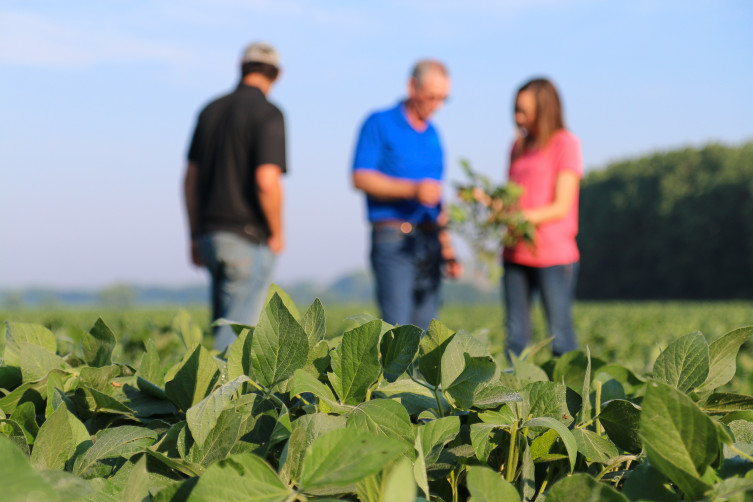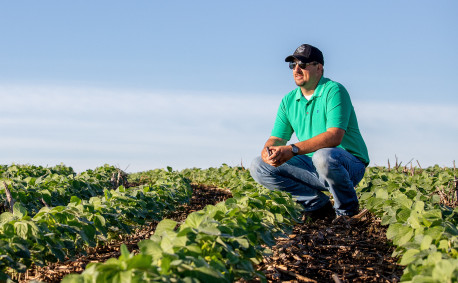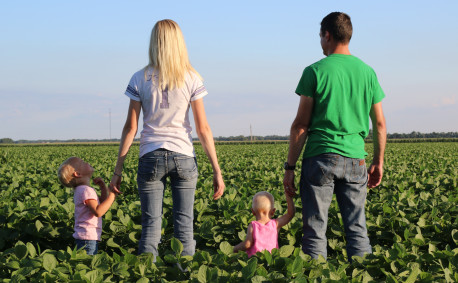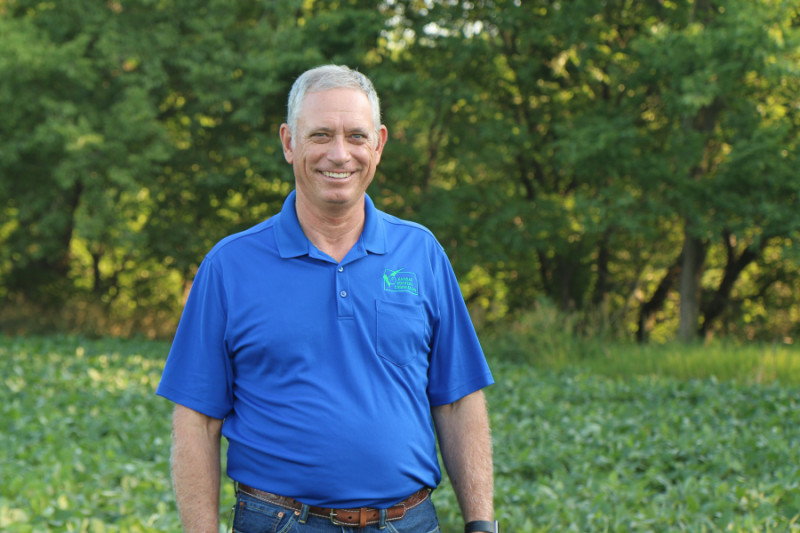Technology Helps Kansas Farmers Lower Their Carbon Footprint
For generations before me, farmers planted, grew and harvested a crop without cell phones, Wi-Fi or YouTube. And some days I’m not sure how they managed.
My brother and I were thrown in the deep end to run the family farm after my dad was elected to the Kansas State Legislature. Although we’d say we knew what we were doing, it sure would have been nice to be able to give dad a call from the field or look up an equipment repair on YouTube. My, how times have changed.
The intention back then was the same as it is now: get a good crop in the ground, then sustain it through harvest. And do it again next year so our children and grandchildren can someday come back and do the same. Sounds like a simple task, but growing a productive crop requires meticulous care for the land, water and air. Technology helps us do that.
 For six generations, my family has been stewarding our natural resources — a necessary task on any sustainable farm. Doing so provides food, fiber, feed and fuel for people here in the U.S. and all over the world. And Kansas agriculture keeps getting better at it. In fact, sustainability efforts by U.S. soybean growers across the country have improved dramatically in the last 40 years.
For six generations, my family has been stewarding our natural resources — a necessary task on any sustainable farm. Doing so provides food, fiber, feed and fuel for people here in the U.S. and all over the world. And Kansas agriculture keeps getting better at it. In fact, sustainability efforts by U.S. soybean growers across the country have improved dramatically in the last 40 years.
For example, compared to 1980, today’s soybean farmers can grow 130% more on the same amount of land. This allows us to use less energy and water and lower our carbon footprint. All while producing more protein for an expanding population.
As farmers have increased production, we've also increased efficiency. I’m proud to say that we've increased land-use efficiency by 48%, irrigation water-use efficiency by 60% and soil conservation by 34%.
The 16,000 soybean farmers in our state provide a growing source of renewable, cleaner energy used in trucks, heavy machinery, and equipment and jet fuel. These types of advances in biodiesel, fostered by farmers through their soy checkoff, have the potential to reduce greenhouse gas emissions by up to 86% compared with petroleum diesel. The product we grow also provides renewable components for thousands of other products, including artificial turf, asphalt, and even Skechers shoes and Goodyear tires.
We do this through research investments and cutting-edge technology that continues to make us more efficient. For example, yield monitors on our farm allow us to care for crops using precise amounts of resources, conserving moisture in the soil and using fewer inputs. Our family adopted no-till farming practices early on. This is a technique that allows us to use last year’s crop residue on the field so we don’t disturb the soil through tillage. This practice helps us increase nutrients in the soil while decreasing erosion, ultimately conserving precious moisture.
As you drive through eastern Kansas this summer, you’ll pass miles and miles of green fields. Stop to take a closer look and know that the families behind those fields have spent generations improving the land, air and water. Caring for our resources isn’t only our job; it’s our way of life. One we pass down with each returning generation.
The author, Lance Rezac, is a fifth generation farmer in Onaga, Kansas, serving as a farmer-leader on the United Soybean Board. He farms alongside his brother, son and daughter and hopes to see his grandchildren return to carry on the family legacy.
This article originally appeared as a guest column in the Topeka Capitol Journal and was provided for republishing on our website courtesy of Kansas Soybeans.





